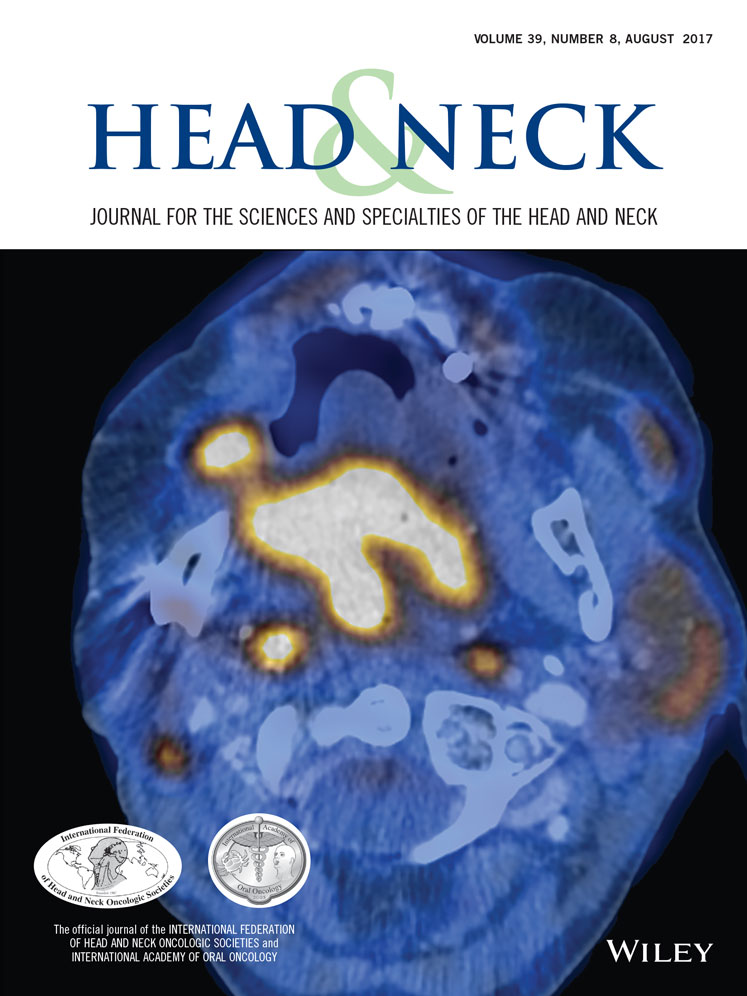Effect of transcervical arterial ligation on the severity of postoperative hemorrhage after transoral robotic surgery
ABSTRACT
Background
The value of transcervical arterial ligation during transoral robotic surgery (TORS) as a measure to decrease postoperative bleeding incidence or severity is unclear.
Methods
A retrospective single institution study was performed to identify risk factors for hemorrhage after TORS for oropharyngeal squamous cell carcinoma (SCC).
Results
Overall, 13.2% of patients (35/265) experience postoperative hemorrhage. T classification, perioperative use of anticoagulants, surgeon experience >50 cases, and tumor subsite were not predictors of postoperative hemorrhage. Of this cohort, 28% underwent prophylactic arterial ligation. The overall incidence of bleeding was not significantly decreased in patients who underwent arterial ligation (12.1% vs 13.6%; p = .84). However, arterial ligation significantly reduced the incidence of major and severe bleeding events (1.3% vs 7.8%; p = .04). Radiation before TORS was a risk factor for major and severe postoperative hemorrhage (p < .02).
Conclusion
Transcervical arterial ligation during TORS may reduce the severity of postoperative hemorrhagic events. © 2017 Wiley Periodicals, Inc. Head Neck 39: 1510–1515, 2017




